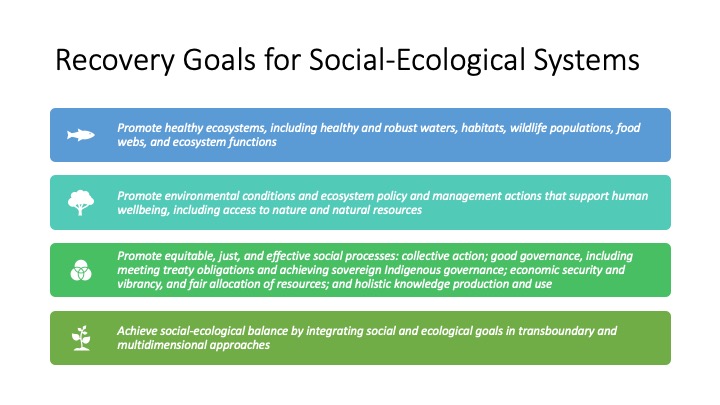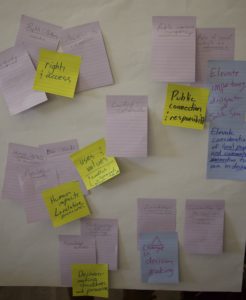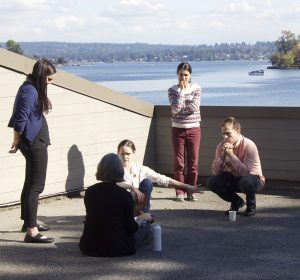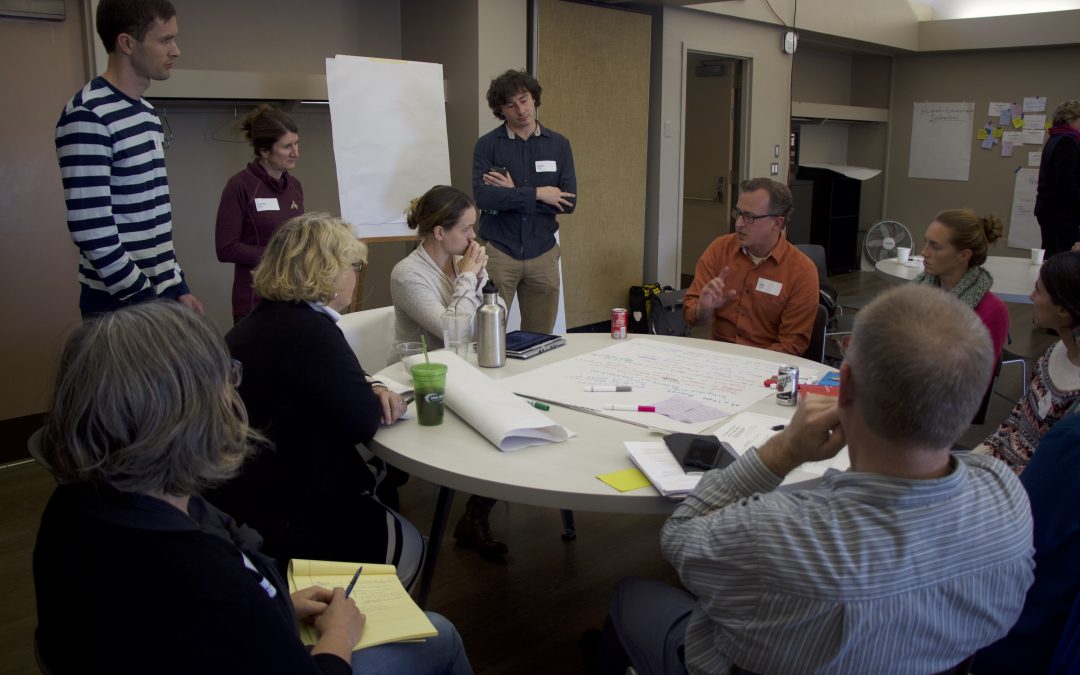Guest post written by Brandon McWilliams, WSG Science Communication Fellow
The human dimension of ecosystem work is often limited to the image of researchers in waders taking samples, or examining data tables back in the lab. This view is flawed, though, as it ignores the vital role that social science plays or could play in restoration. One of the hopes for the Social Science for the Salish Sea (S4) project, an interdisciplinary environmental social science effort to outline a robust research agenda, is to overcome this bias and open up new pathways for collaboration between social and natural sciences for ecosystem recovery.
The S4 project — a collaboration between a diverse group of environmental professionals including WSG’s Melissa Poe— resulted in a prioritized list of 33 research topics associated with 4 major ecosystem recovery goals.

Sara Breslow, social science lead at UW’s EarthLab and one of the organizing authors of S4, says the range of these topics show that “social science is plural. Each field can offer different things to ecosystem recovery.” Breslow notes that there seems to be a lack of awareness regarding the role environmental social scientists can play. “S4 helps articulate who we are, what we do, and what we have to offer,” she says. She explains that the initiative acts as a “menu” of potential research topics social scientists can study to support environmental practitioners and decision-makers.
At the top of the menu are five highly ranked social science research questions for the Salish Sea. These priorities (in order) are:
- How does, and will, climate change impact the holistic health and well-being of Salish Sea communities?
- To what degree, and how, are diverse people and their values currently represented in political and decision making processes, how does representation affect ecosystem recovery outcomes, and how are diverse people affected by these outcomes?
- Is the legal framework for ecosystem recovery working?
- How can Indigenous knowledge systems and governance (i.e., traditional knowledge, Indigenous science, and Coast Salish legal orders) be meaningfully applied in ecosystems recovery?
- How is urbanization and development impacting the Salish Sea social-ecological system, and how can impacts be mitigated and minimized through planning?
Poe is hopeful that “the full set of priorities can help guide ecosystem management agencies and organizations determine social science needs and investments,” she said. “This agenda can also motivate researchers to pursue topics with important application to immediate ecosystem recovery goals, and feel confident they are on the right track,” explains Poe.

The process of arriving at the major ecosystem recovery goals and associated research topics was fruitful, yet not easy. The S4 planning team, consisting of Leah Kintner, Sara Breslow, Stacia Dreyer and Heather Cole, decided from the start that they wanted to gather a diverse group of professionals. Over the course of about a year, the team sought out academics, applied researchers, practitioners, and funders working in the Salish Sea in both the United States and Canada. They looked for experts in an array of social science fields including federal and state agencies, tribal governments, universities, and NGOs, and strove for diversity in demographics as well as the types of communities being served when selecting the working group.
In addition to a core “authors” working group who teamed up over 4 day-long sessions, the S4 project assembled advisors, individuals with expertise in fields from economics and environmental law to public health and anthropology. One of the advisors was Melissa Watkinson, a WSG outreach staff. The full collection of authors and advisors (about 40 people) only met once, for a six-hour working session. The day was inevitably provocative, as professionals from very different fields and with differing priorities worked to define a manageable list of research topics. “It was intense,” Breslow says. “Social scientists are a very diverse group. They don’t necessarily see eye to eye.”

The 4-person planning team saw that the day resulted in more than just the bones of the agenda. “It was a group that hadn’t met each other before, but all shared their work in wanting to understand the social aspects of ecosystem recovery in the Salish Sea,” Breslow says. People spontaneously broke out into side conversations, grouped up to discuss projects, and debated shared issues. “This is a community waiting to happen,” Breslow says. “It just needs opportunities to be pulled together.”
The outcomes of that working day, and the many subsequent hours of work by the author and planning teams, are already seeing use in a variety of arenas. Some of the S4 priorities are now being incorporated into the Puget Sound Partnership’s science plan and the project is garnering interest from the EPA, the Salish Sea Institute, and the Nature Conservancy. The author team is also in the process turning lessons from the project into a peer-reviewed manuscript for an academic audience, with potential recommendations for how to build environmental social science research agendas in other contexts.
Most importantly, however, S4 is a model — and a call for the importance of collaboration across borders, both tangible and intangible. The problems our environments face are multifaceted and complex, so the solutions must be equally multifaceted. The S4 project is just one step towards this goal, but it is a significant one. “The S4 project is a piece of what needs to be a larger campaign to show how our work in environmental social science is essential for the health of our planet,” Breslow says.
More information can be found on the EarthLab blog, and the full S4 agenda can be accessed through the Puget Sound Partnership here.




